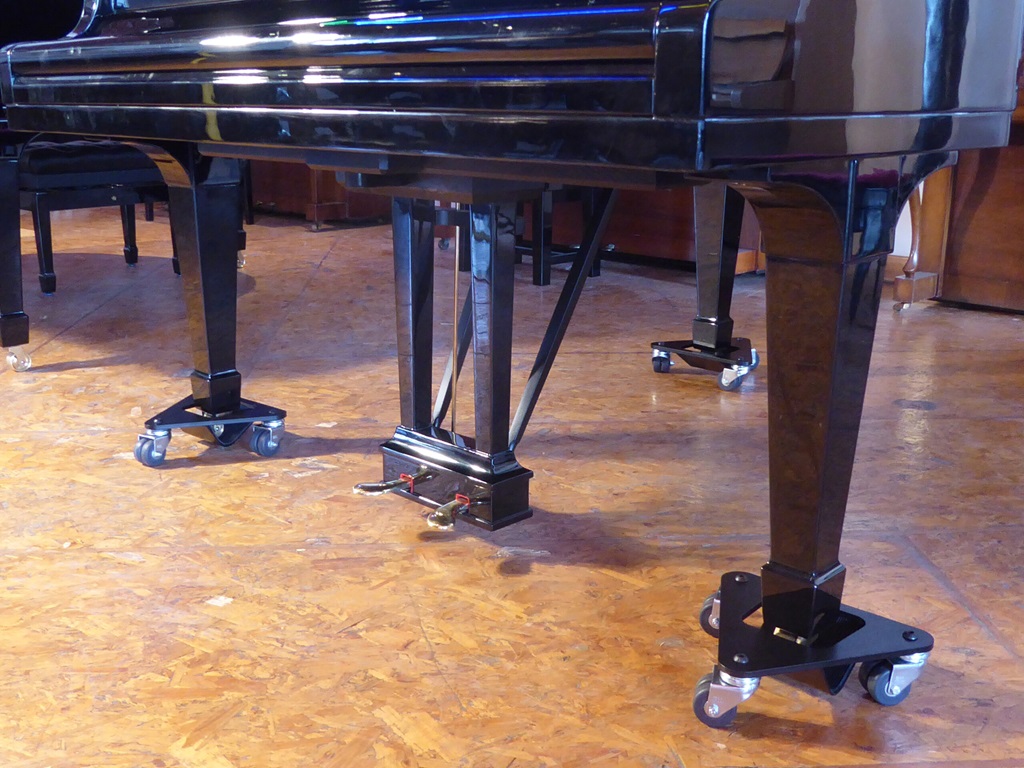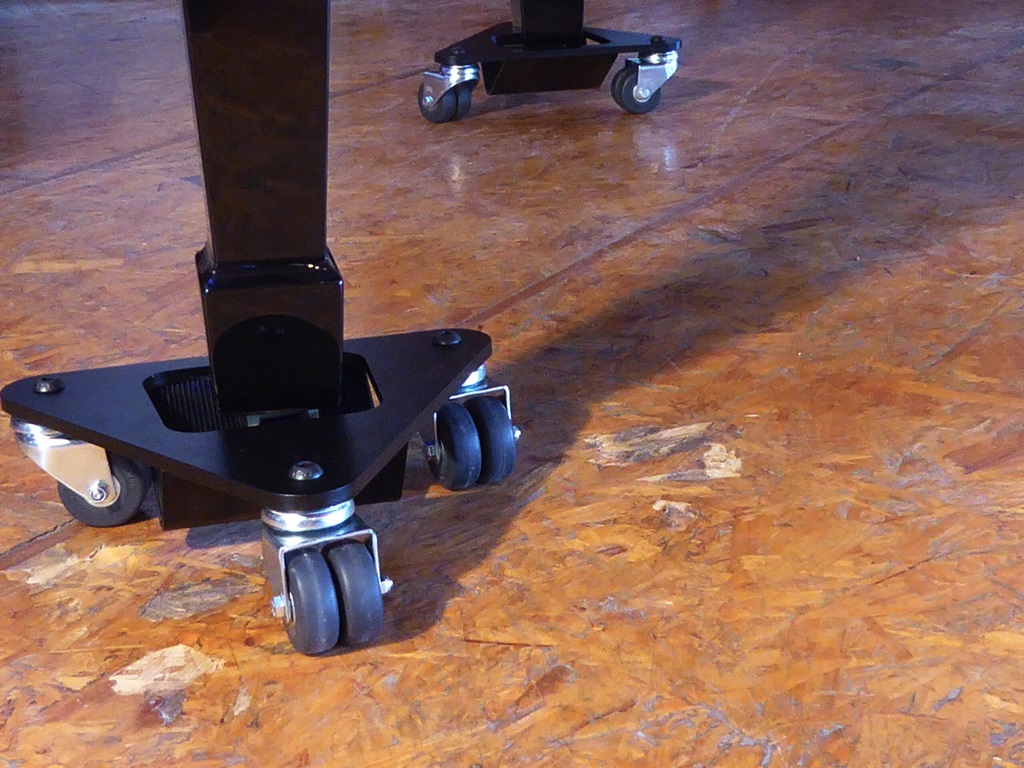As a piano owner, one of the most stressful parts of the instrument’s care and maintenance is moving it. Even small upright pianos can weigh anywhere from 300 to 1000 pounds, making them extremely heavy and awkward to move. The wrong piano mover or dolly can damage the instrument or cause injury.
Luckily, with the right equipment and technique, moving your piano doesn’t have to be a daunting process. This beginner’s guide will walk you through everything you need to know to choose the right piano dolly and move your piano safely.
The Dangers of Moving a Piano Without a Dolly
Before diving into specifics on piano dollies, it’s important to understand why a specialty dolly is so crucial in the first place. Moving a piano without some type of dolly puts both the movers and instrument at serious risk.
Without a dolly to properly balance and distribute the piano’s weight, the movers will inevitably end up bearing the brunt of the load. This frequently leads to back injuries or dropping the piano, which can damage its structural integrity. Pianos also have delicate interior components like harp supports and soundboards that can crack under too much strain.
In short – do not attempt to slide or lift a piano any significant distance without a dolly designed for the task! The small upfront investment is well worth it to protect your back and your beloved instrument.
Choosing the Right Type of Piano Dolly

Piano dollies come in a variety of styles suitable for different piano types, weights, and moving scenarios:
- Basic Piano Boards or Slides
Basic piano slides consist of a set of long wooden boards or plastic slides that the piano rests on top of. One person pulls the piano while 1-2 people push and steer from behind.
Best for:
- Light duty moving of upright pianos under 500 lbs across smooth surfaces a short distance, like sliding it away from the wall to clean behind it
Limitations:
- Not suitable for moving pianos up/down stairs
- Requires 3+ able-bodied movers for larger pianos
- Easily damaged by scrapes and gouges
- Two-Wheel Piano Dollies
Two-wheel piano dollies contain a steel frame with two heavy-duty casters that supports the piano’s weight. One person tilts and pushes the dolly using attached handles while 1-2 people steady and steer the piano from behind.
Best for:
- Maneuvering upright pianos under 800 lbs short distances across flat, smooth floors
- Getting pianos through standard doorways and around tight corners
Limitations:
- Difficult for one person to control safely up/down stairs
- Casters can damage wood/tile flooring
- Four-Wheel Piano Dollies
Four-wheel piano dollies provide maximum maneuverability and stability with a steel frame and 4 large casters that distribute weight evenly. These dollies enable 1-3 people to move heavier upright and grand pianos safely.
Best for:
- Navigating uprights up to 1300 lbs and baby grand pianos across long distances
- Moving pianos up/down stairs safely
- Loading in and out of trucks
Limitations:
- Bulkier frame makes pivoting around tight corners challenging
- Significantly heavier and pricier than other designs
- Ramp Dollies
Ramp dollies convert from a two-wheel dolly to a ramp configuration, allowing a single person to pivot the piano onto its side and roll it vertically. This protects doorways and staircases from damage.
Best for:
- Moving mid-size upright pianos under 700 lbs through narrow spaces
- Staircases with intermediate landings to reset the dolly on each level
Limitations:
- Piano must have detachable legs to fit vertically
- Potential to overbalance piano if alone on stairs
- Vertical Piano Lifts
Powered vertical lifts use hydraulics or pulley systems to rotate the piano vertically and move it safely via remote control. These machine-operated lifts provide effortless maneuverability up staircases without risk of accidents.
Best for:
- Moving the heaviest grand and upright pianos up/down stairs
- Tall spiral staircases or cargo elevators
- Safe handling by only 1-2 operators
Limitations:
- Very expensive, with rental generally more cost effective
- Require access to power outlets along the move
Other Piano Moving Equipment Essentials
In addition to dollies, a few other important accessories can greatly improve safety and ease when moving a piano:
Piano Slings/Straps: Special reinforced nylon straps wrap underneath the piano to provide extra stability and prevent slipping/tipping. They also allow for attachment to dollies.
Piano Bars: Steel support bars with protective padding screw into a piano’s internally threaded bolts. This distributes heavy stress loads evenly across the side walls/bottom frame.
Furniture Pads: Soft quilted pads that adhere to all walls/corners of the piano prevent external nicks and scratches during the move.
Temporary Caster Attachments: Caster wheels that securely screw into existing furniture legs, reducing drag during short slides across the floor.
Now that you’re familiar with the various piano dolly options and accessories, let’s go over some best practices for preparing for your big move.
Preparing Your Piano for Moving Day
Getting your piano move-ready with some prep work will ensure everything goes smoothly on dolly day:
Declutter Access Paths
Clear any clutter along the planned moving route inside and outside the home. This includes temporarily removing furniture blocking doorways, clearing stairs/landings, and any large decorative items that impede tight squeezes.
Protect Vulnerable Flooring
Lay out special piano boards, plywood sheets, or cardboard atop vulnerable hardwood and tile flooring along the route. This prevents scratches, gouges, and cracks from dollies rolling over.
Detach Precarious Legs
If possible based on dolly type, detach legs or pedals that stick out very far from the base. This prevents them from catching on corners or doorframes during the move.
Disassemble Doors
If doorframes are too narrow for your piano, detach the door off its hinges in advance. This prevents costly damage from attempting to wedge the piano through unmodified openings.
Empty Bottom
Storage Clear out any personal items stored underneath grand pianos prior to tilting them vertically onto dollies. This provides unobstructed access to roll the dolly’s ramp underneath.
Schedule Professional Movers
If lacking manpower or moving expertise, hire professional piano movers with specialty equipment to handle the entire process. They can also provide storage options if necessary.
Moving Day: Step-By-Step Game Plan
Now for the big day – here is a step-by-step overview of smoothly executing your piano move:
Strap On Protective Accessories
Start by screwing robust piano bars into internally threaded bolts around the instrument’s perimeter. Wrap padded piano slings underneath for stability. Adhere soft furniture pads on all external corners/sides.
Load Up The Proper Dolly
With helpers, tilt the piano onto its selected dolly system. Secure it tightly with all integrated straps/buckles. Engage the locking mechanisms on wheel casters.
Clear The Route
Have helpers stand aside any dangerous corners or chokepoints. Assign a helper to operate doorways by safely removing doors beforehand if necessary.
Take It Slow & Steady
Carefully roll the loaded dolly over protected flooring at a slow, steady pace. Pause for any repositioning needs around difficult corners. Use extreme caution when tilting the piano backwards to climb stairs.
Detach & Unload
After reaching the destination, detach all accessories and straps. Slowly tilt off the dolly until helpers can grab opposite sides of the piano. Gently set it down in the desired placement.
Break It All Down
Disassemble the emptied dolly and properly store all moving equipment. Assist helpers with rehanging doors and removing floor protection.
Tune Up & Celebrate
With the piano settled into its new home, take time to catch your breath and tune the instrument back to its optimal sound. Enjoy music-filled celebrations in the special room you carefully transported it into!
The Takeaway

While nerve-wracking, moving a piano doesn’t need to be the nightmare task its notoriously made out to be. The right specialty dollies matched with careful handling techniques empower virtually any piano owner to transport their instrument safely.
Some types of piano moves truly do require professional assistance when factors like long distances, stairs, narrow hallways, and extremely heavy instruments enter the equation.
But for routine short-distance repositioning, non-twisted stair movement, and sliding upright pianos under 1000 lbs – something as simple as a quality two or four-wheel dolly opens up tremendous DIY capability.
The small upfront investment into piano-specific moving supplies like straps, bars, ramps, boards, and dollies pays exponential dividends over time. Not only does it drastically reduce physical strain and injury risk compared to manual lifting – it also protects the structural health of the precious piano itself.
Conclusion
Moving an expensive, heavy, and cherished musical investment like a piano understandably inspires anxiety. But arm yourself with the detailed recommendations in this guide, and you can feel empowered to transport your piano smoothly across any distance – even as a total beginner.
The key is matching the right type of specialty piano dolly system with your specific scenario – whether that’s sliding an upright across the room or hauling a grand piano up multiple flights of stairs. Combining purpose-built equipment with careful handling best practices is a proven formula for piano moving success and peace of mind!
FAQs
How much does it cost to move a piano professionally?
Professional piano moving costs range widely based on distance traveled, crew sizes, staircase needs, etc. Average benchmarks are ~$100 for a short local move up a few floors, $250 within the same city, up to $800+ for longer intrastate/interstate journeys.
Can you move a piano upstairs by yourself?
It is not recommended. Smaller upright pianos under 500lbs can potentially be maneuvered up a straight staircase alone using ramp or two-wheel dollies. But any twisting, uneven landings, or heavier pianos over 700lbs absolutely require 2+ skilled professionals to prevent accidents.
How do you transport a grand piano?
Grand pianos present specialized moving challenges due to their larger size, open horizontal shape, and extremely heavy weight distribution. Purpose-built four-wheel dollies with long, widened wheelbases help tremendously. But the strongest recommendation is always hiring professional piano movers with specialized grand piano equipment.
Should piano movers remove the legs?
This depends on factors like the piano’s size/shape and whether it needs to be tilted vertically to clear staircases/landings. Generally for uprights, leaving legs attached with padded blankets provides the most structural stability. Grands often necessitate detaching their legs to fit dollies underneath and navigate narrow spaces.
How often should you tune a piano after moving it?
It’s highly recommended to schedule an expert piano tuning 2-3 weeks after moving it. This allows the instrument to fully settle into stable humidity/temperature conditions essential for ideal string tension. Assuming these ambient environmental factors hold consistent in the new location, subsequent tunings are only needed every 6 months or so.